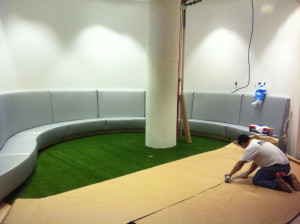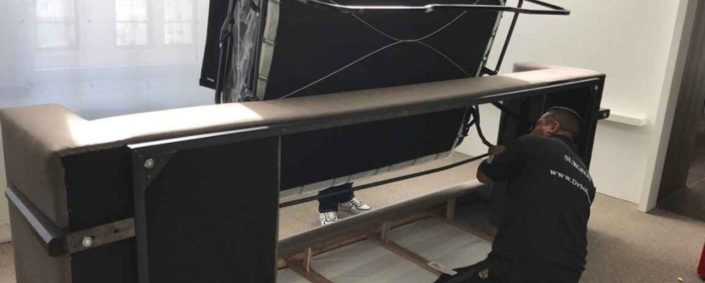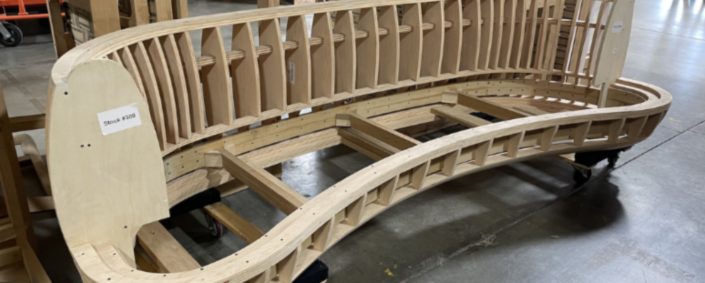Should You Reupholster a Couch Yourself?

 Everyone likes saving money. And lots of us like projects that call for hands-on skills, and the chance to learn new ones. So the idea of doing furniture maintenance at home is appealing. With reupholstering, people usually start with something small like repairing a seat on a side-chair, or re-covering a loose pillow. If you’ve done something along those lines and liked the result, you may want to attempt to reupholster a couch. Is this a good idea? The honest answer is, “it depends”.
Everyone likes saving money. And lots of us like projects that call for hands-on skills, and the chance to learn new ones. So the idea of doing furniture maintenance at home is appealing. With reupholstering, people usually start with something small like repairing a seat on a side-chair, or re-covering a loose pillow. If you’ve done something along those lines and liked the result, you may want to attempt to reupholster a couch. Is this a good idea? The honest answer is, “it depends”.
Several factors should be thought through before you get into such a project. But before going on, a word of caution. If you’re interested in how to reupholster or repair a leather couch, as opposed to a fabric-covered one, you’re looking at a different ballgame. For one thing, leather is a costlier material, and mistakes (which even a careful amateur is almost inevitably going to make) can be expensive. So with that in mind, here are some issues to think about.
The couch in question. How big is your sofa, what is its shape and style? Geometric Mid-century Modern, curving Chesterfield, something in between? The more curves, the more success will depend on precision cutting, folding, and fastening to shape the material smoothly to the contours of the frame and padding. Successful re-covering of the padded elements of a Mid-century piece, can call for careful measurement and trimming, since they are often attached to an exposed molded (wood, plastic, or metal) frame, with no “tucking crevices”. Think also about the age and condition of the couch. An older piece might need more than a new cover. Renewal of padding and/or springs is a more complicated job. Another question: how much recovering does the sofa need.
Reupholster a Couch: Transforming Your Old Furniture into a Stylish Statement Piece
The result you want. Are you envisioning a complete re-cover or a partial one? Do you want to match or closely replicate the existing upholstery or do you want something new? If partial, like renewing a seat or backrest pillow with matching material, this may well be within the average DIYer’s reach, depending on their comfort level with sewing machines and welting for edges, etc. Cushion reupholstery shows up often when researching how to repair a leather sofa, as the smaller, more simply contoured cushion is a more manageable leather project for someone without a lot of experience. Complete re-covering is obviously a more demanding job.
The tools and skills. Take a look at upholstery videos, or a good illustrated book. Upholstery shops use pneumatic staple guns and staples of a particular type. Hand tools like padded mallets and carpentry tools for “tearing down” a piece if it’s necessary to replace the padding as well as the cover; upholstery shears; tacks and welting; foam and batting; and other tools of the trade can be seen in action. DR. Sofa: Your go-to for seamless business furniture installation. Elevate your workspace with our professional touch and precision.
So it really does depend. Working with a pro is often the smart thing to do!










